In my young life I have lived in quite a few households – first with my primary family, then I moved to college where a lot of interesting room-mate situations happened, and now I live with a partner. In these households there was ALWAYS some sort of dispute around household management and chores.
To settle at least the basics of shared responsibility, we have tried many methods; most commonly there was a list of stuff to do and stuff to buy hanging somewhere in the house, sometimes we resorted to holding interventions for the ones that did not do their share of work, and in recent years we have toyed with the idea of using technology to get our household working. We tried shared calendars, shared to-do lists and angry emails. I do have to say that basically all the methods worked – for a limited amount of time. Then the initial intent wore off and we were back to where we started.
Out of this need to bring all the household members together on the same page about what needs to be done to make a household a home, we started building Homey.
When we thought about why all the other systems and mobile apps do not have what it takes to manage your household in the long term, we came up with some points that a perfect household management app has to have. It is by no means an exhaustive list, and we will for sure come up with more features and functionality while we develop this, but here is what we have so far:
1. It has to have content
As with creating a physical home management system like home management notebook, a to-do list on a piece of paper or a star system for tasks; building a comprehensive list in an app for chores takes a lot of time and focus to really think about everything that needs to be done. Managing repetitive tasks takes additional time. This is why Homey comes with lists of elements – tasks and subtasks – according to the rooms in your home, pets you own, your garden, vehicles etc. You can customize and adjust those elements or you create your own content. But to get it started all you have to do is assign existing element to the members of your household and do the rest along the way.
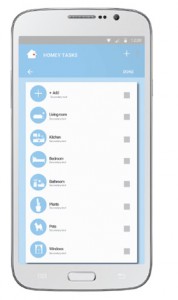
2. It has to be visual
We believe mobile communication thrives with pictures. Writing long descriptions about chores takes too much precious time, taking a photo of a messy room indicates the task in a glance. Bringing in a visual element also creates responsibility to really do the task well. In talking with parents we found out that a start system often just makes children go for the reward, and parents are often left with half cleaned rooms. With Homey, other members of household see how the lawn has been mowed, the laundry done and dishes washed – and the person who takes the photo also takes pride in his or hers accomplishments.
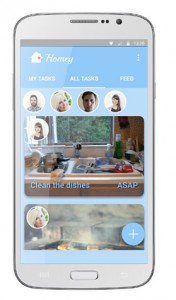
3. It has to foster communication
Having a shared to-do list does not entice household members to engage with it. There is no feedback, no way to say “good job!” and no way to ask for help or directions. Homey strives for accountability that goes beyond checking chores of the list – it creates a feedback system where first a task is set, the result is seen, and in every phase everyone can comment and help. When a task is added, has changes made or is finished it goes to the household feed, where you can communicate with all the household members. With this overview of everything, you always know what is going on in your home.
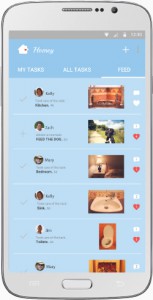
4. It has to help you define important things
It is easy to get lost in the to-do lists of all the tasks that have to be done – this is especially true if you manage a large home. To help with this Homey divides your tasks in those assigned to you and all tasks. Additionally Homey creates a daily docket at the top of your list. To move not immediately important chores lower on the list, you just have to swipe them a bit to move them to the bottom of the daily docket, or fully to move them out of the daily docket. Unlike the rigid lists where tasks have hard defined due dates, Homey creates a flexibility of scheduled routine in how you run your home – you can set up a due date or just a routine. Because it really cannot be laundry Tuesday, if you do not have enough dirty laundry by Tuesday:)
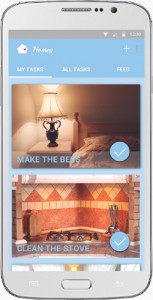
5. It has to create an appreciative environment
Do you too know those conversations about who did what and who does the most and who never does anything? Perceptions about our own share of work, as well as others shares, are more often than not distorted. Rarely is it true that the one we blame of never doing anything, truly never does anything – more often his work is just not as valuable to us, or it seems easier than it actually is, or we believe it takes less time. Homey fixes this with a comprehensive overview of all the chores that get done by everyone and with creating objective and emotionally non-involved statistics about how much everyone contributes. This creates an appreciative environment, where things get done with a lot more joy.
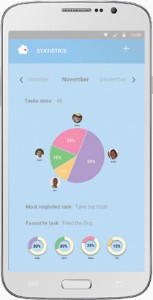
Disclaimer: a lot of stuff about how we develop Homey comes from the insight we got when we were seeking help with managing our own homes. The daily docket idea for instance comes from the wonderful blog The art of simple– you can read more about it here.
